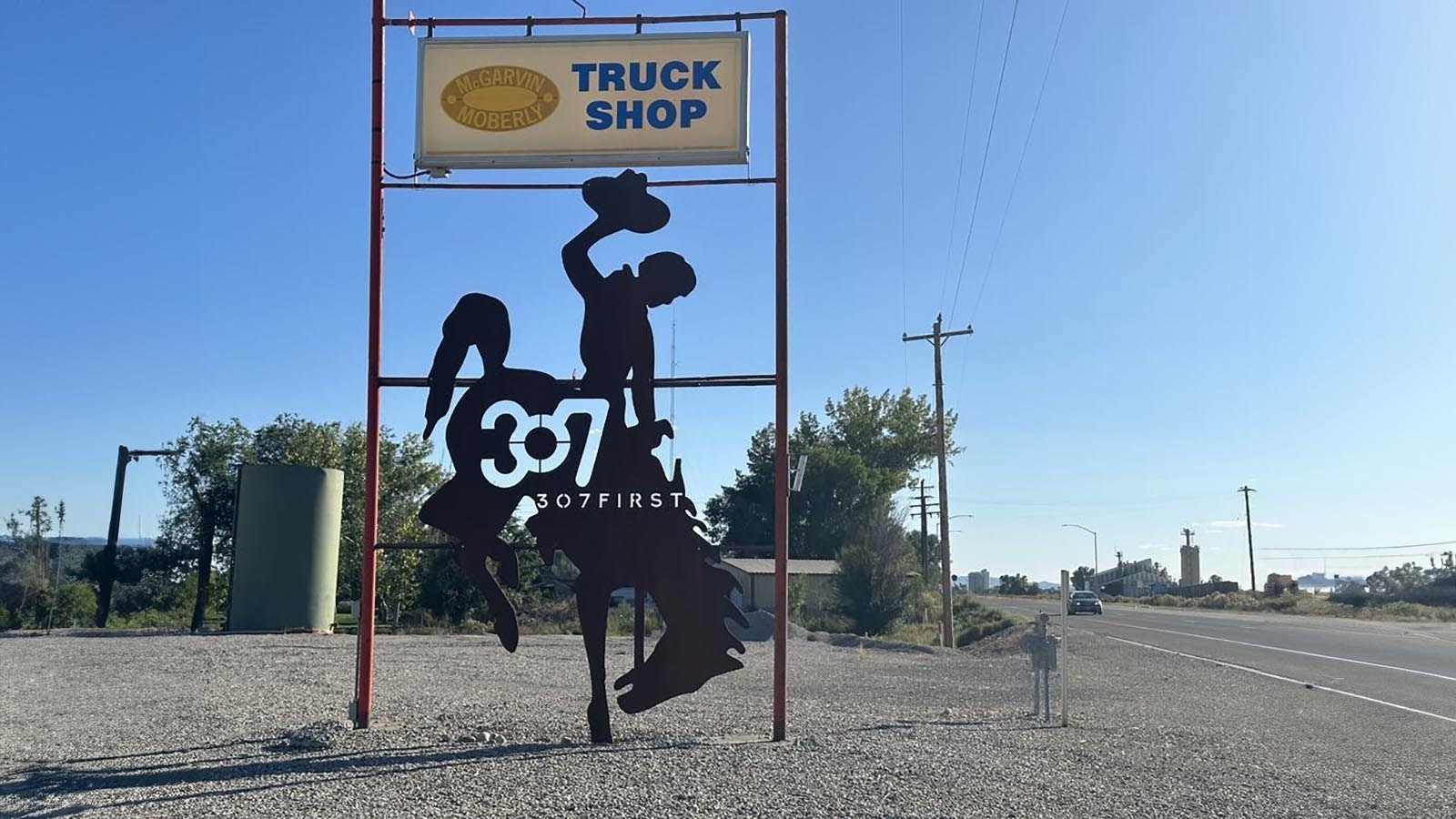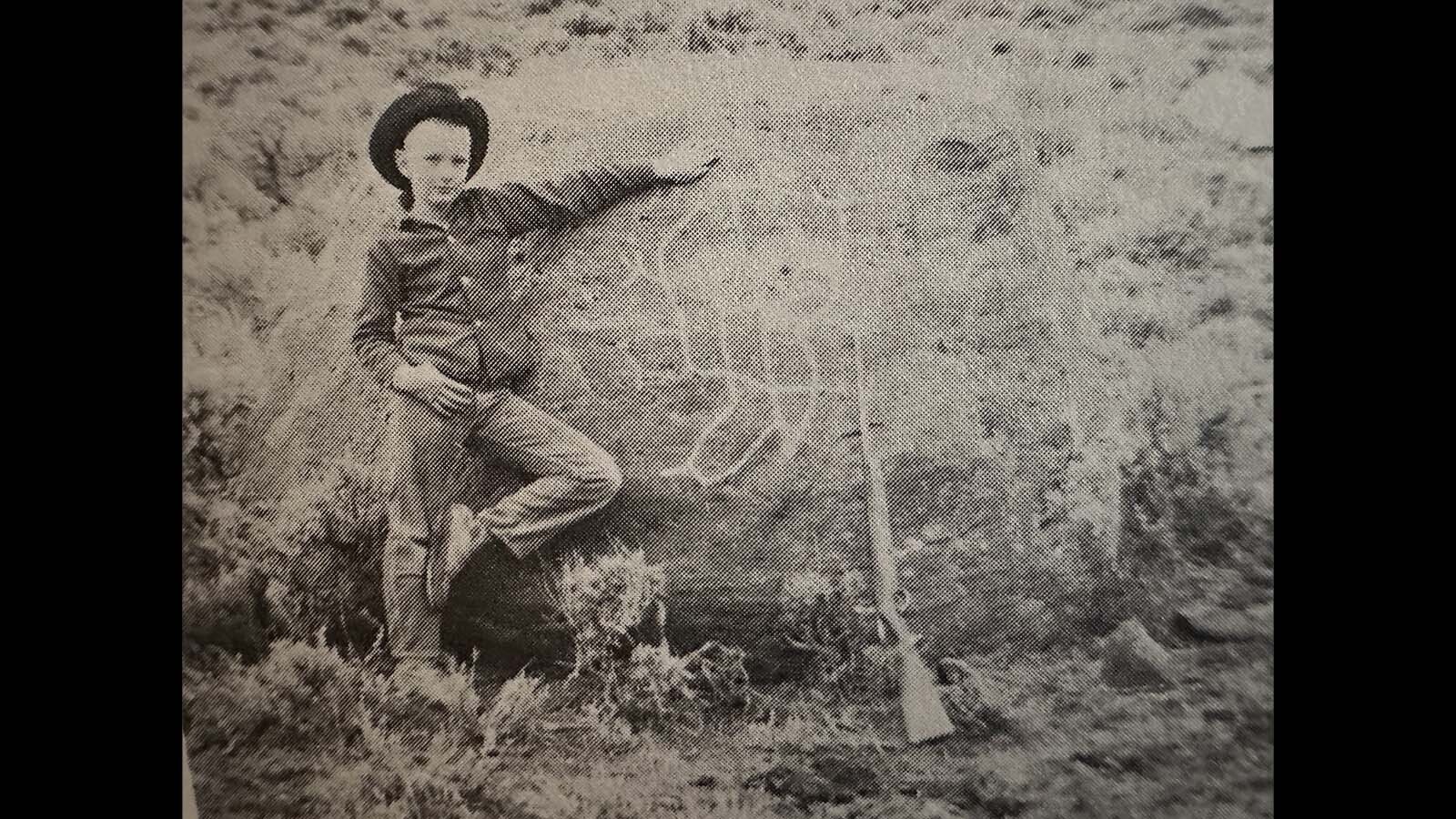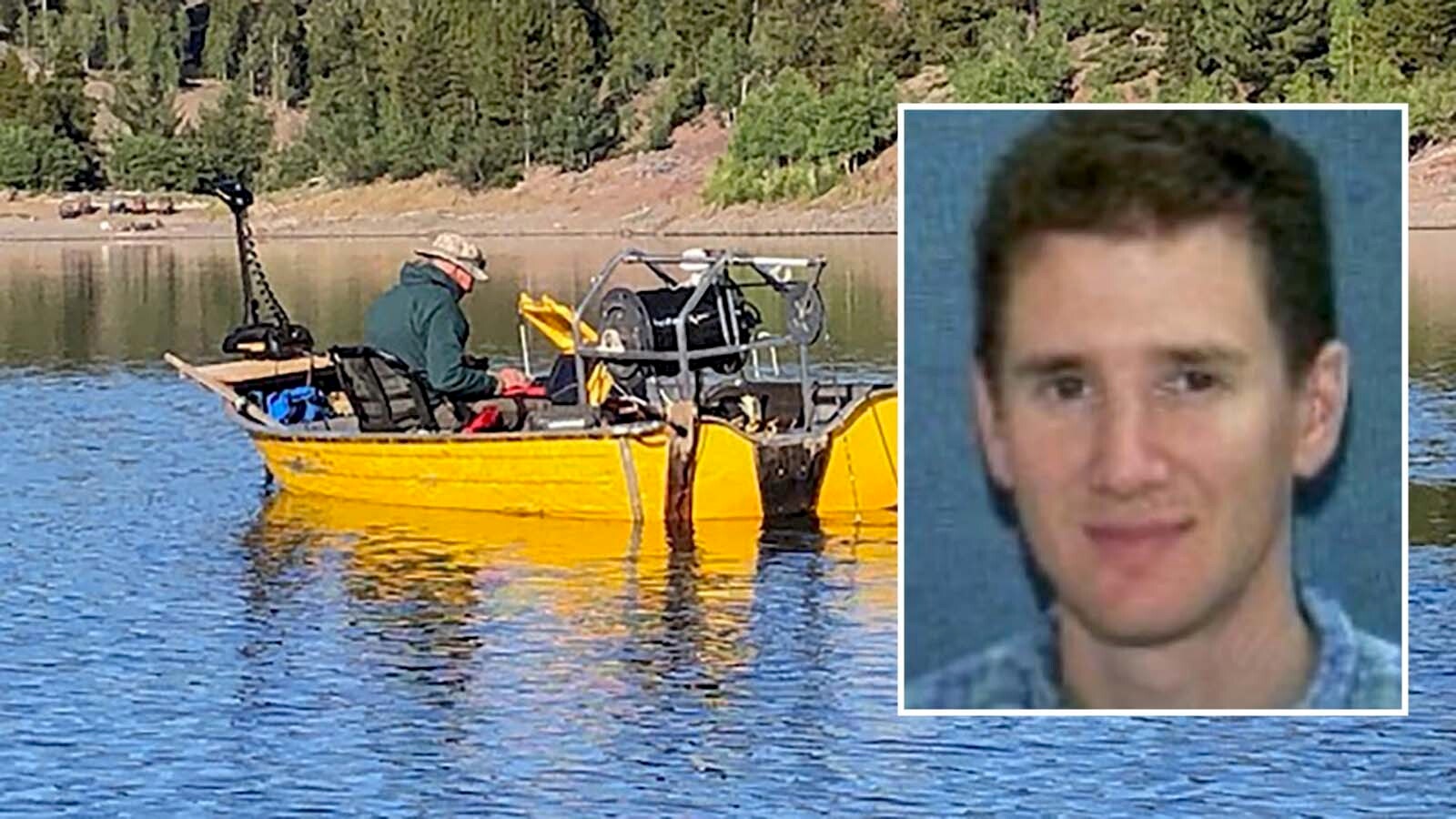A dry climate, at high altitude, with little winter snow, frequent high winds and semi-regular hailstorms don’t mix to make Cheyenne the ideal location for a 9-acre collection of specialty landscapes and a three-story grand conservatory.
Nor would any logical person bet that a group of senior citizens, at-risk youth and handicapped volunteers would make up a stable volunteer workforce that provides most the labor required to maintain and grow such a monumental facility.
“I kind of jokingly say you’d have to be an idiot to put a botanic garden in Cheyenne, and I was that idiot,” said horticulturist Shane Smith said. “But I sure had a good time.”
And so have countless others who’ve enjoyed the Cheyenne Botanic Gardens over the last 45 years.
Innovative Workforce
Smith, who in 1976 was a horticulture research assistant at Colorado State University in Fort Collins, had become fascinated by solar greenhouses, which no one in the region had developed to that point.
But in Cheyenne, the nonprofit Community Action of Laramie County had seen some success with small 10-by-12-foot solar greenhouses. When the organization began construction on a 5,000-square-foot building, Smith volunteered his time and was ultimately asked to head up the facility, which was named the Cheyenne Botanic Garden.
“Originally, the main idea was to give senior citizens meaningful activities that produced food,” Smith said. “So under my tenure, we planted the first seed. I paid for the seed out of my own pocket because there was no budget for seed.”
Two or three months after the garden opened in 1977, Smith was approached by the local Goodwill organization, which asked if there would be a way disabled adults could volunteer.
“So, they started showing up almost every day,” he said. “Usually there’s about four to five clients on a bus. It’s very therapeutic for them, and they love doing it.”


There also were other benefits for the volunteers.
“They would come home with food to their group homes,” he said.
Soon after, Smith was approached by a local judge who asked if youth could work off court fines by volunteering at the garden.
“I said sure,” he recalled, which set the stage for a volunteer labor force that still tends to the gardens today.
“It became kind of a big social experiment,” Smith said. “Rarely would you mix those three groups in a social setting, right? But the kids are a great help with the heavier stuff. The handicapped folks are really good with detail work like weeding or cleaning plants up, and the seniors are good at just all kinds of things depending on their age and ability.”
The unique workforce attracted specialists in “horticultural therapy” and set the Cheyenne Botanic Garden up for one of many firsts the organization boasts, Smith said.
“We built the nation’s first wheelchair-accessible orchard, first functioning one anyway,” he said. “We prune the trees to be totally accessible from a wheelchair, so somebody in a wheelchair could do everything from harvesting, pruning, weeding, things like that.”


Cultivating ‘Firsts’
In 1978, the Cheyenne Community Solar Greenhouse, as it was called then, made itself available to be Wyoming’s first community garden.
“Mostly our volunteers partook in it,” Smith said. “But we also started getting community members saying, ‘Hey, can I have a plot?’ And so, gosh, we had about 30 clients.”
In 1980, the greenhouse hosted the first farmers market in the state.
“We ended up assisting an awful lot of other cities in Wyoming to teach them how to organize and put together a farmers market,” said Smith.
By 1985, staff and volunteers at the greenhouse were growing plants that aren’t usually found in the Rocky Mountain West, such as banana trees, fig trees, coffee trees and exotic flowers.
“We were starting to look and feel more like a botanic garden,” Smith said.
Sustainable Infrastructure
By the mid-1980s, the organization had branched out to grow living things other than plants.
“We started beehives,” Smith said. “We also had a chicken coop, and we had geese and we had turkeys.”
Smith said the volunteers would use turkey manure to fertilize the gardens, and the turkeys would eat the grasshoppers.
“We’d have kids working off court fines herd the turkeys through the community gardens,” he said. “And we’d end up with 25- to 30-pound turkeys and we’d butcher those at the end of the season for Thanksgiving. We were a botanic garden/farm.”


Difficult Growing Conditions
If he had known how difficult it would be to start a botanic garden in Cheyenne, Smith said he might have reconsidered taking the job in 1977.
“It’s No. 1 for hail in the nation,” he said of the local climate. “And then it’s No. 4 for wind, (Cheyenne) is the windiest city in the state. And with the wind combined with the elevation, Cheyenne has weather patterns that really don’t allow us to have much snow on the ground in the winter, so in order to get trees to really thrive and survive, we had to haul out water and water them in the wintertime.”
However, the adversity brought support, and Smith said the organization used the challenges to its advantage.
“When the public would drive up and see us growing flowers and food, they were just so excited and supportive and wanted to help out,” he said.
Growth And Expansion
Smith said the venture proved so successful that in 1985, the Cheyenne Community Solar Greenhouse applied for a $395,000 Community Development Grant through the state to move the operation from its original building just outside of the Cheyenne city limits to Lion’s Park.
“Our building was starting to rot at the seams and our lease was becoming very tentative,” Smith said.
Because of the organization’s unique volunteer workforce and its benefits to the community, he said the Cheyenne City Council almost unanimously supported the grant application.
“So we built this very nice, very similar-looking solar greenhouse in Lions Park,” he said.
Staff and volunteers appealed to the city to take over the operation as part of the Parks and Rec Department, Smith said.
“(We had) low pay and no benefits for the staff,” he said. “And we were getting to a point where it’d be nice to have some insurance and get paid what we’re worth. We were working six days a week in the summer, with a farmers market every Saturday.”
In 1986, with a new location and new name (the Cheyenne Botanic Gardens), the organization expanded its offerings while splitting off some of activities.
“Once we were taken over by the city, we let Community Action have the running of the farmers market because we just couldn’t do it all,” Smith said. “And then we agreed to grow all the flowers for the city park system, which was a gigantic commitment.”
That was a good deal for the city, he said, because they received 50,000 bedding plants that were grown with no extra labor costs because of the volunteer workforce.
“We planted a total of about 80 different flower beds around town and on our grounds in Lions Park,” said Smith.
Presidential Recognition
In 1986, President Ronald Reagan recognized Cheyenne Botanic Gardens with an award for exemplary volunteerism. And in 1990, President George H.W. Bush honored it with one of his 1000 Points Of Light awards.
“We got an honor from George Bush Sr. with the 83rd Point of Light Award,” Smith said, adding that Point of Light recognized volunteer organizations. “It was a real honor.”
And in 1994, the gardens won an award from President Bill Clinton, the American Entrepreneurial Leadership Award.
In 1989, Smith was awarded a Harvard Loeb Fellowship, which gave him access to training that he said allowed him to move the Botanic Gardens into the future.
“I took a lot of leadership classes, I took a lot of politics-based classes, which ended up really helping me move the gardens forward,” he said.
Nonprofit Status Allowed Expansion
In 1993, the complementary nonprofit called Friends of the Botanic Gardens was formed.
“That ended up being a gigantic change for the future of the gardens,” said Smith. “Because from ’93 on, virtually all of our landscapes, including the whole Paul Smith Children’s Garden, were built without using taxpayer money. They were built through donations.”
Since the nonprofit began, the gardens have expanded tremendously. And in 2017, its Grand Conservatory was opened to the public.
Named for Smith, the three-story facility features a tropical plant collection, a baroque-style orangerie, a bonsai house and special sections featuring desert, Mediterranean and prehistoric landscapes.
Attractions
The conservatory features several one-of-a-kind attractions, including an authentic Navy submarine periscope.
“It moves up and down so our kids can look through it,” Smith said. “And so that’s a first. We’re the first botanic garden in the nation to have a Navy submarine periscope, probably in the world.”
The Paul Smith Children’s Garden also is a major attraction, said Smith, in part because of its designer — world-renowned landscape designer Herb Schaal — but also because of its energy-efficient construction
“We opened it in 2009, and not a dime of taxpayer money went into the construction of it,” Smith said. “And it was also another first; it was the first LEED (Leadership in Energy and Environmental Design) certified children’s garden in the world.”
In addition to the Grand Conservatory and Children’s Garden, the Cheyenne Botanic Gardens boasts 27 specialty landscapes, a Discovery Pond, a Garden Labyrinth, the Bedont Rose Garden, the Reckling Herb Garden, a Sensory Garden and Gazebo, Rotary Plazas, Rock and Conifer Garden and Peace Garden, as well as the Cottage Garden, Perennial Walk, the Crevice Garden and the Habitat Hero Pollinator Garden.
Another attraction the Cheyenne Botanic Gardens is proud about is Engine 1242, the oldest locomotive engine in Wyoming.
“We were given our 8-9 acres of grounds from the city to manage, and it included Wyoming’s oldest steam locomotive,” Smith said. “So we did some fancy landscaping around it, some special interpretation, and we found a historic fence made of welded railroad parts in Laramie.”
Testament To Cheyenne’s People
Although he retired in 2019, Smith’s pride in the legacy he helped create is evident.
“It’s unheard of to have a professional botanic garden with a tropical conservatory in a town the size of Cheyenne,” Smith said, attributing much of the success of the venture to several cost-saving measures.
“We had a nonprofit that raised money for us and advocated for us,” he said. “We had free labor with volunteers – and a lot of volunteers. And we had long used renewable energy.
“Our very first greenhouse was 100% solar heated, our next greenhouse in the park was 100% solar heated. And then we put photovoltaics and solar heat in the children’s village, and we also have a wind generator in the children’s village.”
But mostly, Smith said, the success of the Cheyenne Botanic Gardens reflects the hardiness of the people of Cheyenne.
“It seems like a lot of the great things Cheyenne does, it does with a great staff and volunteers,” he said. “People in Cheyenne roll their sleeves up and they don’t have to think about a good idea very long, they just kind of go for it. That’s kind of been our history.”
Which means together they’ll continue to cultivate a flourishing partnership.





